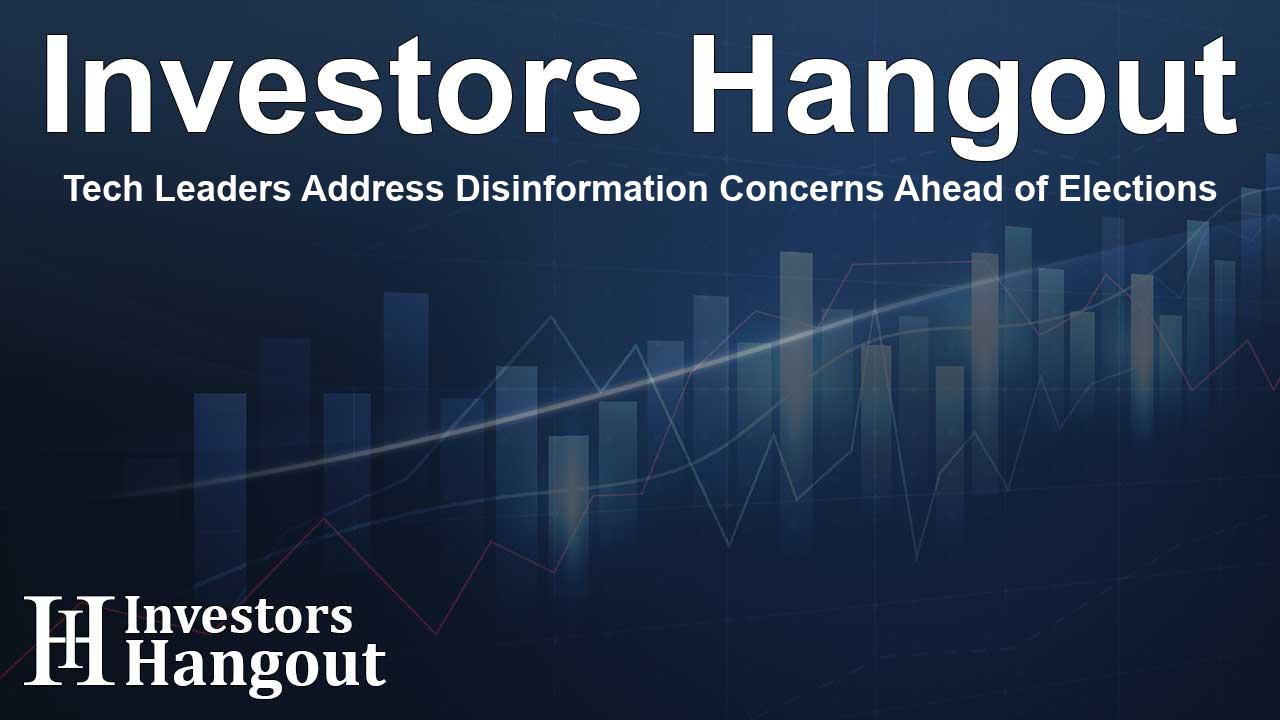Tech Leaders Address Disinformation Concerns Ahead of Elections

Understanding Disinformation Threats Before Elections
In an important meeting, U.S. lawmakers interacted with top tech executives to prepare for foreign disinformation threats as elections draw nearer. There was a palpable sense of urgency as senators stressed the critical need for proactive measures.
Key Vulnerabilities Surrounding Election Day
Executives acknowledged that the final 48 hours before Election Day present considerable risks. Microsoft President Brad Smith pointed out, "Today we are 48 days away from the election... the most perilous moment will come, I think, 48 hours before the election." His statement struck a chord with the panel, revealing a collective recognition of the potential unrest that could arise.
Post-Election Scenarios of Concern
Senator Mark Warner echoed these views, contending that the 48 hours after polls close could also be highly concerning, especially in tightly contested races. This highlights the necessity for vigilance even after Election Day.
Major Tech Companies on the Frontline
Executives from major companies like Google and Meta joined the discussion, outlining their plans to mitigate disinformation risks. Meta, which oversees Facebook and Instagram, plays a significant role during election periods given its huge influence.
Absence of Key Players
Elon Musk's platform, X, was invited to participate but chose not to send a representative, a point noted by several senators. The lack of TikTok's involvement also raised questions about the inclusivity of the ongoing conversations about disinformation.
The Role of Example Scenarios
Smith illustrated the real dangers of disinformation by referencing a concerning incident from Slovakia's recent election, where a fabricated voice recording of a political leader appeared shortly before the voting took place. This incident starkly highlights how swiftly misinformation can propagate.
Cracking Down on Misinformation
Lawmakers stressed the urgency of the situation by referencing recently uncovered methods linked to purported Russian influence operations. They revealed that deceptive news websites masqueraded as legitimate news outlets, complicating the task for regular voters to discern truth from falsehood.
Calls for Transparency
During the hearing, Warner called on tech companies to share data reflecting the extent of these disinformation campaigns. He sought detailed statistics on how many Americans encountered misleading content and the volume of ads promoting these false narratives.
Embracing New Technologies
With the rise of generative AI technologies, many tech firms have committed to using labeling and watermarking to help combat the spread of misleading content. These initiatives aim to address the growing ease of creating realistic deepfakes, particularly in the context of elections.
Creating Safeguards Against Deepfakes
Executives faced questions about their companies' responses if deceptive deepfake content emerged just before elections. Both Smith and Meta’s Nick Clegg affirmed that their platforms would label such content, alerting users to the possibility of misinformation. Clegg also mentioned that Meta might limit the visibility of this content.
Looking Ahead
The discussion underscored the challenges tech companies will encounter as they navigate the complex landscape of misinformation during such a pivotal time for democracy. Ongoing communication between tech leaders and lawmakers is vital to maintain the integrity of elections.
Frequently Asked Questions
What was the main focus of the Senate committee hearing?
The central topic was tech companies' responses to foreign disinformation threats leading up to the elections.
Which companies were represented during the hearing?
Executives from Microsoft, Google, and Meta participated, sharing their strategies to combat misinformation.
What are the critical timeframes mentioned regarding election vulnerabilities?
Significant vulnerabilities were noted in the 48 hours before and after Election Day, particularly in closely contested races.
How are tech companies addressing the spread of misinformation?
Many tech companies are adopting labeling and watermarking practices to help identify and flag misleading information.
What was the example used to highlight disinformation risks?
Smith referenced a fake recording that circulated during Slovakia's elections, underlining how quickly false narratives can take root.
About The Author
Contact Thomas Cooper privately here. Or send an email with ATTN: Thomas Cooper as the subject to contact@investorshangout.com.
About Investors Hangout
Investors Hangout is a leading online stock forum for financial discussion and learning, offering a wide range of free tools and resources. It draws in traders of all levels, who exchange market knowledge, investigate trading tactics, and keep an eye on industry developments in real time. Featuring financial articles, stock message boards, quotes, charts, company profiles, and live news updates. Through cooperative learning and a wealth of informational resources, it helps users from novices creating their first portfolios to experts honing their techniques. Join Investors Hangout today: https://investorshangout.com/
The content of this article is based on factual, publicly available information and does not represent legal, financial, or investment advice. Investors Hangout does not offer financial advice, and the author is not a licensed financial advisor. Consult a qualified advisor before making any financial or investment decisions based on this article. This article should not be considered advice to purchase, sell, or hold any securities or other investments. If any of the material provided here is inaccurate, please contact us for corrections.
